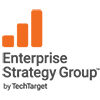 There are a few ways to do a three-scoop ice cream order. You can commit to one flavor because it’s your favorite, it’s reliable, and you don’t like mixing flavors. You can get two scoops of your favorite flavor and one of a different flavor; this option allows you to stay loyal to your favorite flavor but also enjoy some variety. Or you can get all three different flavors, balancing the uniqueness of each, how they complement each other, and the different strengths and weaknesses they each have. Ok, maybe I’m looking a little too deeply into ice cream ordering, but this is how organizations are thinking when allocating workloads to cloud environments. While sticking to what they know may feel safer and more straightforward, sometimes the risk of mixing clouds (or flavors!) is worth the reward.
There are a few ways to do a three-scoop ice cream order. You can commit to one flavor because it’s your favorite, it’s reliable, and you don’t like mixing flavors. You can get two scoops of your favorite flavor and one of a different flavor; this option allows you to stay loyal to your favorite flavor but also enjoy some variety. Or you can get all three different flavors, balancing the uniqueness of each, how they complement each other, and the different strengths and weaknesses they each have. Ok, maybe I’m looking a little too deeply into ice cream ordering, but this is how organizations are thinking when allocating workloads to cloud environments. While sticking to what they know may feel safer and more straightforward, sometimes the risk of mixing clouds (or flavors!) is worth the reward.
In a recent research study, ESG asked organizations how many unique public cloud infrastructure service providers they are currently using. The study revealed that 86% of current public cloud infrastructure users leverage a multi-cloud strategy, most using between 2 and 4 public clouds. There are many reasons why organizations may choose to adopt multiple clouds, such as leveraging the greater selection of capabilities across multiple providers. Like when mixing flavors of ice cream, when organizations use multiple clouds, they are able to capitalize on the unique strengths and benefits of each. ESG Senior Analyst Rob Strechay noted, “Organizations are betting big on multi-cloud. It is more than reality, but a necessity. More organizations are deploying applications that span multiple clouds to get the job done, and it provides them more benefits than it does risks.”
With this shift to multi-cloud strategies also comes coordination and security challenges. In the same ESG research survey, organizations reported that ensuring proper coordination/cooperation between multiple cloud teams along with traditional IT functional teams (44%), ensuring security across multiple cloud environments (36%), and the time and effort associated with moving apps/data between data center(s) and multiple public cloud services (32%) are the top challenges their organizations face as a result of using multiple cloud service providers (CSPs). For this reason, IT vendors are designing solutions to help organizations more easily implement and manage their multi-cloud environments. By connecting on-premises infrastructure to these CSPs, organizations can reap the benefits of all types of environments and data storage.
To learn more about how these solutions are bringing value to organizations, check out these ESG Validation reports: Dell EMC PowerScale Solution for Azure, Dell EMC PowerScale, DivvyCloud, Fortinet on Google Cloud, Nutanix Clusters.
Enterprise Strategy Group (ESG, a division of TechTarget) is an IT analyst, research, validation, and strategy firm that gives the global IT community access to market intelligence and actionable insight. The Validation Team creates assets such as Validation reports, videos, webinars, and more that help to communicate the technological and economic value of IT products and solutions.







